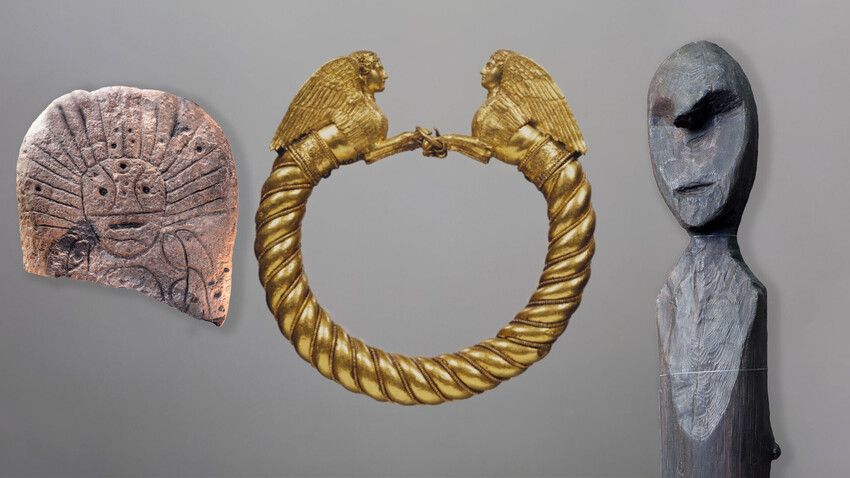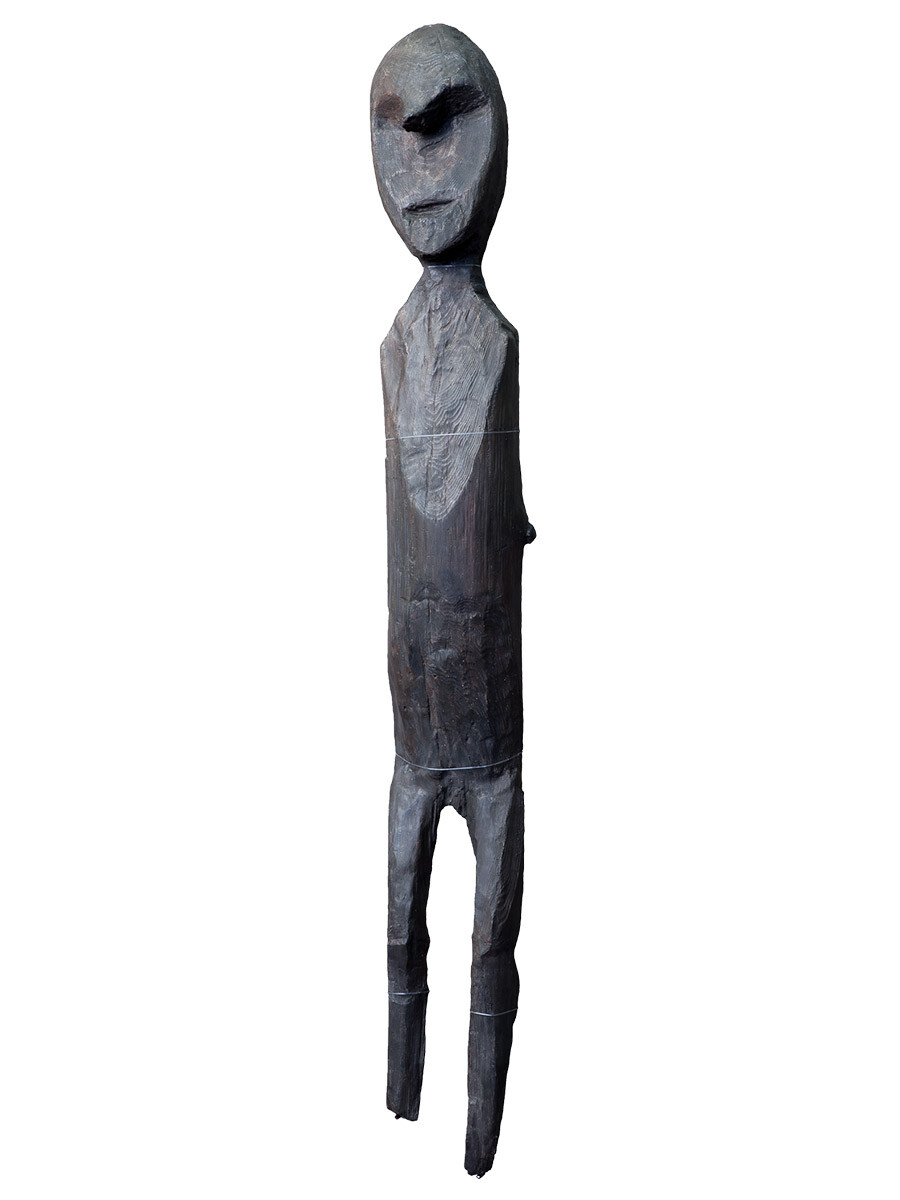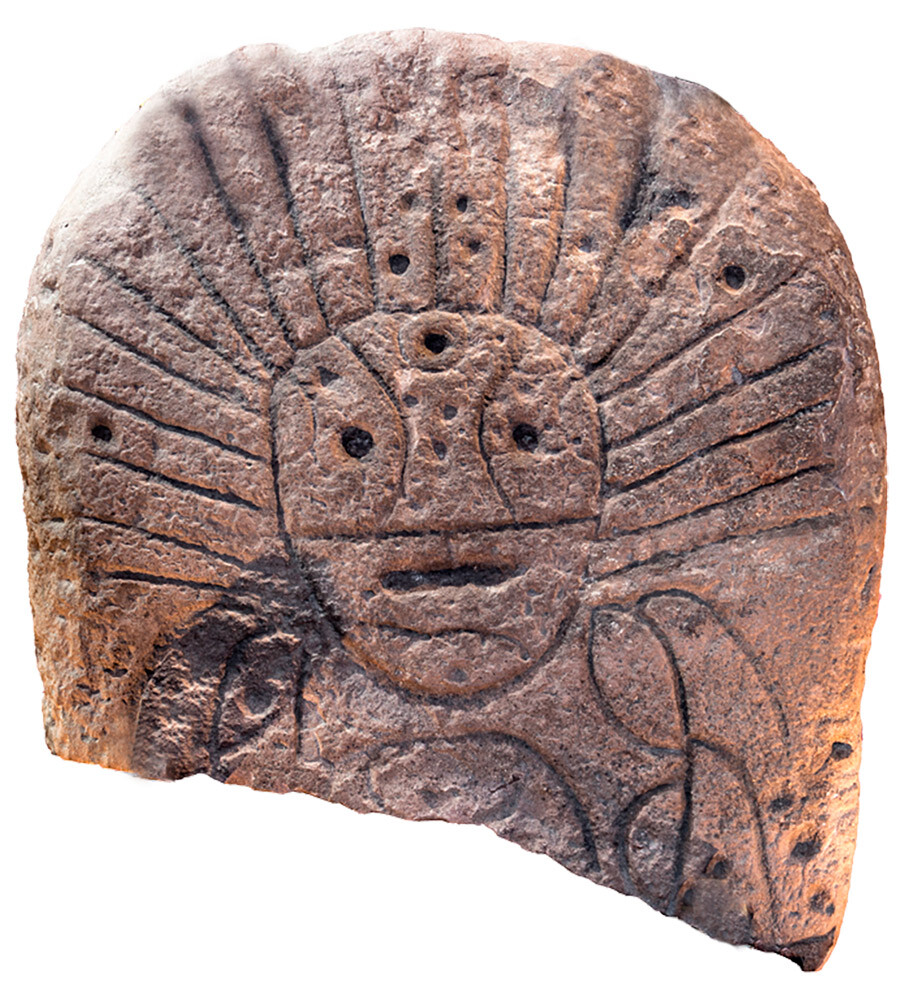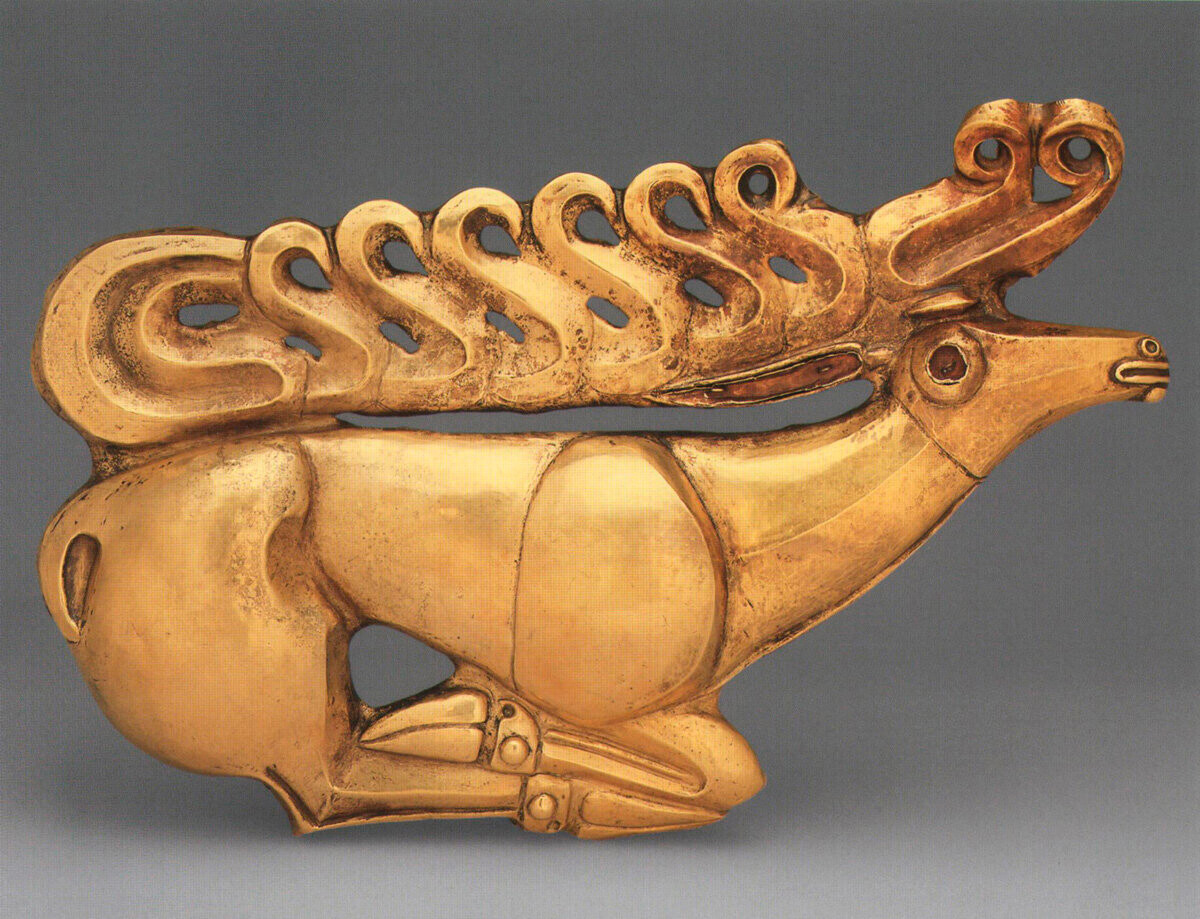
One of the oldest wooden sculptures, older than the Egyptian pyramids and Stonehenge, was discovered in the 1930s in the Sverdlovsk region in Siberia. The remains of an ancient settlement were found on the shore of a shallow lake. Among the household items were five 1-1.5-meter-tall figures made of pine wood, dug into the bottom of the reservoir. They personified the guardian spirits of the swamp, to whom sacrifices were made.

This rare artifact was discovered near the Black Lake in the south of the Republic of Khakassia. The stela depicts a solar deity associated with the fertility cult. It was worshiped by the ancient population of Southern Siberia: they made sacrifices to it and would smear its mouth with the sacrificed animal’s blood or lard. And, if the “stone deity” did not help in hunting, it could be whipped with a whip.

This large golden buckle in the shape of a stag decorated a ‘gorytos’ – a case for bow and arrows of a Scythian warrior. This artifact – a classic example of the Scythian “animalistic” style – was found in 1897 at the excavations in Zakubanye, near the Kostromskaya stanitsa (modern Krasnodar Territory), 77 kilometers away from Maikop (Republic of Adygea). The ‘Kostromskaya Stag’ is one of the official symbols of the Hermitage Museum.

The world’s oldest preserved pile carpet was discovered in 1949 in Altai Republic, during the excavation of the Fifth Pazyryk barrow – at the burial place of one of the leaders of nomadic peoples. Historians argue about the origin of the artifact. It may be early Turkmen, proto-Armenian, Persian or Assyrian. And, by its purpose, the artifact could have been used for collecting a deceased’s remains or may have just been a “board” for playing some form of dice game.

In 1830, a Scythian burial in the Kul-Oba barrow was accidentally discovered on the Crimean peninsula, not far from Kerch. Kerch is the former Greek city of Panticapaeum, the capital of the Bosporan Kingdom, which existed from the 5th century BC to the 6th century AD. The Scythians, who also lived on the peninsula, maintained close relations with it. The jewelry piece is obviously made by a Greek master.

Dear readers,
Our website and social media accounts are under threat of being restricted or banned, due to the current circumstances. So, to keep up with our latest content, simply do the following:
If using any of Russia Beyond's content, partly or in full, always provide an active hyperlink to the original material.
Subscribe
to our newsletter!
Get the week's best stories straight to your inbox